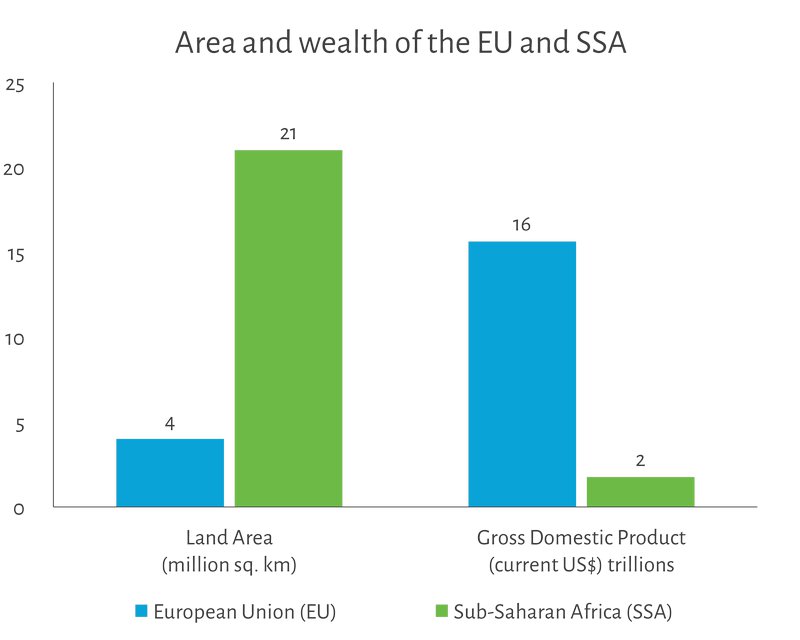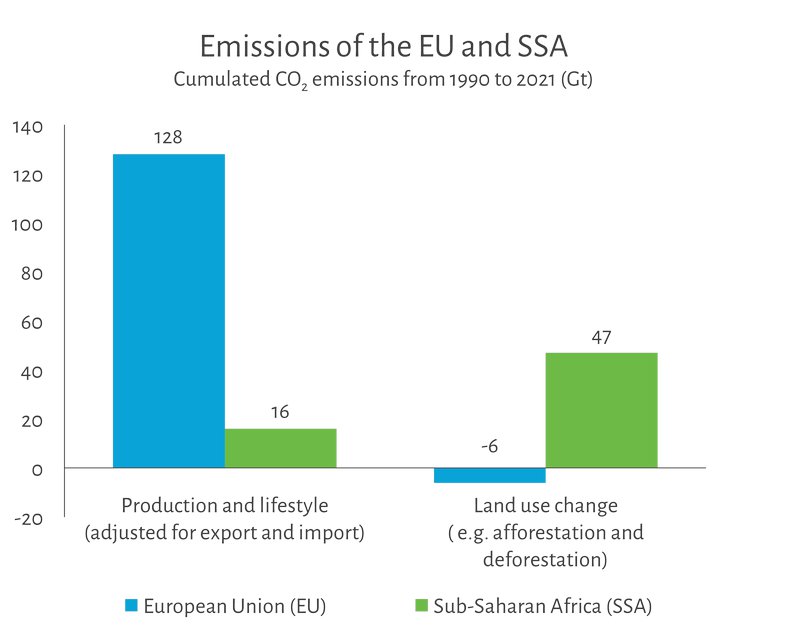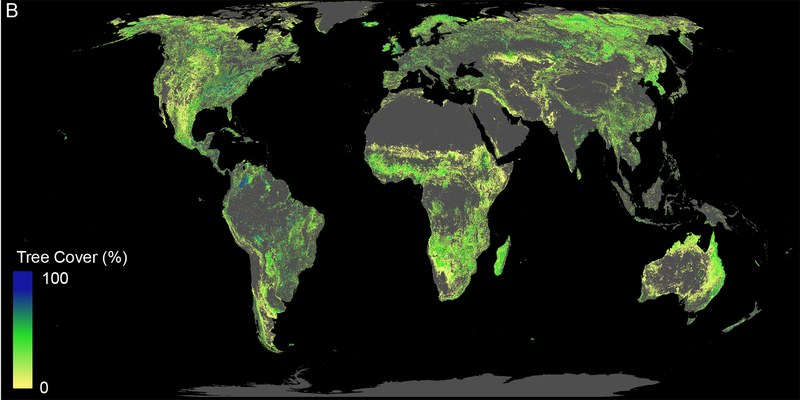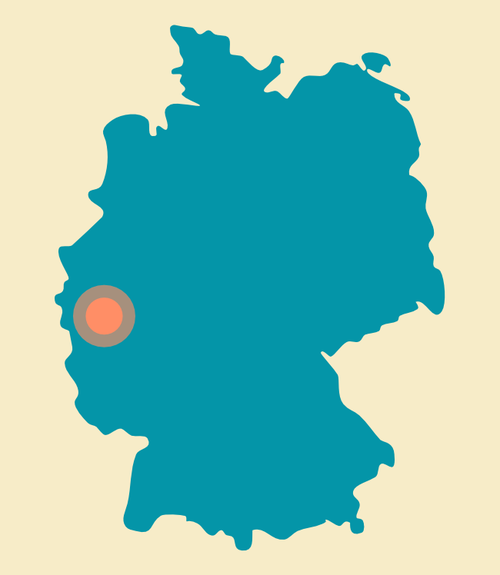Twin Regions
Let's Team Up for ...
True Decarbonization & True Partnership
Climate and ecological collapse are accelerating, and the niche for human survival on Earth is shrinking.
The big idea
Plain and simple: to survive, we urgently need to rally all global resources to cut down greenhouse gas concentrations. There's no way around it.
Reducing emissions alone won’t be enough to prevent catastrophic global warming exceeding 2 °C (Source: Synthesis Report of the IPCC Sixth Assessment Report). Large-scale CO2 removal is essential, but with industrial CO2 removal technologies still in their early stages, photosynthesis remains the only practical solution. The greatest photosynthetic capacity is found in tropical and subtropical regions (Source: Global photosynthetic capacity is optimized to the environment). This makes international cooperation vital, as high-emission regions often lack the photosynthetic capacity to offset their CO2, while regions with high ecological potential for CO2 removal are often too underdeveloped to achieve it.
Twin Regions is our plan to make this happen. It focuses on enhancing the regions' carbon sequestration resources by fostering partnerships between local communities. This initiative will help high-emitting regions take responsibility and allow partner regions to maximize their carbon sequestration potential. Working together, partners can contribute more to global environmental and social recovery while addressing the effects of ecological collapse.
What are Twin Regions?
A Twin Region is made up of two distant areas that combine their strengths and resources to tackle shared environmental, economic, social, and cultural challenges to achieve their development goals.
A sink region teams up with a source region
Typically a place in an area with low living standards, low emissions and high environmental potential to remove CO2 combines forces with a place in an area with high living standards, high emissions and low environmental potential to remove CO2.
Carbon neutral together
Together, they are pursuing the goal of becoming carbon neutral by 2035, paying down their historical carbon debt, and contributing to a system of environmental stewardship and global equity.
Why it's relevant
The relevance of the Twin Region concept becomes clear when comparing the prosperity, land area, and emissions of the European Union (EU) and sub-Saharan Africa (SSA).

Source: World Bank
The European Union has strong economic potential, while sub-Saharan Africa holds vast ecological potential. The EU, due to its size and climate, struggles to balance its emissions internally. Meanwhile, poverty in sub-Saharan Africa means its significant carbon removal capacity remains untapped. Instead, forests are being cut down for coal, firewood, and large-scale agriculture to address urgent cash needs.

Source: Global Carbon Project
The widespread adoption of the Twin Regions concept will benefit both regions. The European Union would gain access to vast tracts of land in the tropics for low-cost nature-based carbon removal. Sub-Saharan Africa would acquire substantial financial resources to realize its carbon removal potential and ecosystem restoration and thus exit the poverty trap.
In addition, the concept has the potential to counter the polarization of the UNFCCC climate negotiations and strengthen the position of developing countries (Source: The Role of Countries in Climate Negotiations). Indeed, partnerships between complementary regions would help level the playing field and unite people to pursue the common goal of global decarbonization and ecosystem restoration.
To kick-start twinning, we propose that communities in countries with a high carbon removal potential make a concrete offer to reduce greenhouse gas concentrations and a constructive proposal to intensify international cooperation.
Potential
Passive reforestation has the most significant carbon removal potential of all technologies available (Source: Rethinking Climate Change - How Humanity Can Choose to Reduce Emissions 90% by 2035 through the Disruption of Energy, Transportation, and Food with Existing Technologies; Abib, Dorr, Seba, 2021).
A team of scientists from ETH-Zürich, CIRAD and FAO estimated that 0.9 billion hectares of additional forest can be grown without impinging on urban or agricultural lands. (Source: How trees could help to save the climate, 2019). According to their findings, about 205 gigatons of carbon can be captured, equivalent to 100 ppm of atmospheric CO2. However, if we do not deviate from the current climate change trajectory, we are estimated to lose 0.2 billion hectares of potential additional tree cover by 2050, mainly in the tropics.
The green areas in the map below indicate places where extra tree cover could be achieved to remove CO2.

Source: ETH Zurich How trees could help to save the climate, 4 Jul 2019
They conclude:
'We find that restoring 15% of converted lands in priority areas could avoid 60% of expected extinctions while sequestering 299 gigatonnes of CO2—30% of the total CO2 increase in the atmosphere, or 14% of total emissions, since the Industrial Revolution. The inclusion of several biomes is key to achieving multiple benefits. Cost effectiveness can increase up to 13-fold when spatial allocation is optimized using our multicriteria approach, which highlights the importance of spatial planning. Our results confirm the vast potential contributions of restoration to addressing global challenges, while underscoring the necessity of pursuing these goals synergistically.'
(Source: Global priority areas for ecosystem restoration)
This underlines the relevance of the Twin Regions concept.
Taking action
Activities
The Twin Regions focus on reducing emissions and improving land use for carbon sequestration, protecting biodiversity, improving local climate, and building regional resilience.
Whereas emission reduction will be the immediate action required in net CO2-source regions, developing natural carbon sinks will be central to the activities in potential net CO2-sink regions. Of particular interest are areas not used for agriculture, where passive and active reforestation can be promoted through protection, improved fallow, and soil health management.
Above all, the two regions must work out the modalities and strategies to ensure the effective and efficient removal of CO2 and allow for sustainable ecological recovery. Informing people about the situation and the forces driving development is critical to overcoming complacency and promoting self-determination. Citizens need to engage in discussions about the future they want. Together, they must evaluate and decide the various options they have as a society to change things for the better.
Participating localities will be part of the Twin Regions Network, which will work to elaborate a set of guiding principles, create an enabling environment, share experiences, and establish a solidarity fund for disaster relief.
Incentive
The most important driver for implementation is the consistent and socially acceptable application of the polluter-pays principle and the cash-on-delivery principle.
To incentivize emissions reduction and carbon removal, polluters must pay fees, just as they do for waste and wastewater disposal. Pricing must allow land managers and facilitators to be adequately paid for carbon removal and related services. Carbon removal payments are made on delivery and in installments of 20% over five years to build trust and ensure sustainability. To ensure transparency, carbon removal will be determined by monitoring the change in carbon stock on each square kilometer using remote sensing, which meets the highest standards. Transactions, monitoring, and performance reviews will be conducted directly between participating municipalities under the supervision of their citizens.
Each region sets emissions fees and modalities for collecting and paying for carbon removal and supporting services while respecting legal requirements. Currently, removing CO2 would cost about €100 per ton. That's steep but bearable, given the existential threat. In Bonn's case, this equals about 2% ($400 million) of GDP ($26 billion).
Approach
Decentralization, strong citizen participation, and ownership will be critical to success. Our action will be guided by Elinor Ostrom's 8 principles for managing the commons. Direct citizen interaction within and between the two communities will foster the experience of closeness and contribute to mutual understanding and trust.
Implementing the Twin Regions action can only succeed with a step-by-step approach involving all stakeholders. Initially, communities with a high carbon removal potential in the south will be the primary beneficiaries of the action and will therefore be easier to persuade to participate. Convincing communities in industrialized nations in the north, whose lifestyles depend on cheap fossil fuels, is less obvious, even given the acute existential threat posed by the climate crisis.
We are currently doing pioneering work with two communities in Benin (Copargo and Kouandé) and Germany (Bonn and Alfter), and intend to launch a series of projects to accelerate the action. We are presently elaborating concept notes for the following activity areas:
1. Proof of concept
Initiate a range of pilot projects to prove the feasibility of Twin Regions concept to boost international collaboration and solidarity for tackling the climate crisis and restoring ecosystems.
2. Carbon removal offer
Elaboration of a convincing offer for carbon removal with communities in the global South and other potential CO2 sink regions.
3. Global dialogue
Initiation of a global dialogue to facilitate local action and collaboration between communities in the North and South to explore possible pathways for implementation.
We need your help to make it happen. Get involved and find out what you can do.
Expected effects
Fast effect at affordable price
The decentralized approach makes it possible to drastically reduce the time and resources required to lower GHG concentrations and overcome the climate crisis. Bringing together complementary natural and financial conditions and skills and cultures creates unimagined opportunities for developing creative and cost effective solutions.
Virtuous circle
The implementation of the polluter pays principle will lead to a redistribution of wealth between regions. This sets in motion a virtuous circle of development and enables critical social and environmental problems such as poverty, migration, and biodiversity loss to be addressed. Addressing these problems will free up resources invested in combating their consequences.
Crisis and conflict management
Climate change will inevitably lead to increasingly severe disasters and harbors enormous potential for conflict. Twin Regions will contribute to the mutual understanding, trust, and solidarity required for crisis and conflict management.
Employment
Twin Regions offer a variety of employment opportunities in the regenerative sector in which the old and young can participate to shape their future.
Local ownership
Self-determination and self-reliance will favor the development of cost-effective solutions that fit the local conditions and have a high degree of co-benefits. Citizens can experience change directly, closely monitor their efforts' impact, and adjust their actions as necessary.
Public support for change
Active community participation will help increase awareness and understanding of climate issues, thereby increasing public support for mitigation actions.
An example Twin Region partnership

Bonn, Germany
Land area (km²)
145
Population
330,000
Emissions per person CO2(tons)
6.4
Total emissions CO2(tons)
1,940,000
GDP per capita (USD)
81,997

Kouandé, Benin
Land area (km²)
4,500
Population
160,000 (111,540 - 2013)
Emissions per person CO2 (tons)
< 0.4
Total emissions CO2 (tons)
64,000
GDP per capita (USD)
< 1,323
About
Twin Regions emerged at COP25 in Madrid at a meeting of the international initiative "4 per 1000: Soils for Food Security and Climate", launched by France at COP21 in Paris in 2015. "4 per 1000" counts 777 member organizations from 106 countries. It recognizes the enormous potential of the Twin Regions concept to promote global climate action at the grassroots level. Promoting the adoption is one of the 24 goals of its strategy.
The Twin Regions concept and this website's content were developed with experts from the Twin Regions Task Force of the international initiative "4 per 1000" and local authorities and stakeholders from Kouandé and Copargo in Benin.
The Twin Regions Action takes a holistic and inclusive approach. It is a mechanism you can use. We are open to partnering with municipalities, organizations, networks, initiatives, and programs in other thematic areas and all world regions.
Get involved
We are a new movement currently pioneering to get off the ground. We are embedded in an international network favoring implementation and scaling - provided there are enough interested parties.
Twin regions act at the local level. This is your chance to be part of the solution.
Please take 2 minutes to fill in the Expression of Interest form and leave us a comment.
We will update this website according to progress. Please follow us on our blog and social media to connect, get updates, and learn how to support the Twin Regions action.
Legal notice
Marc Bernard
African Innovation Services
07BP720
Cotonou
Benin